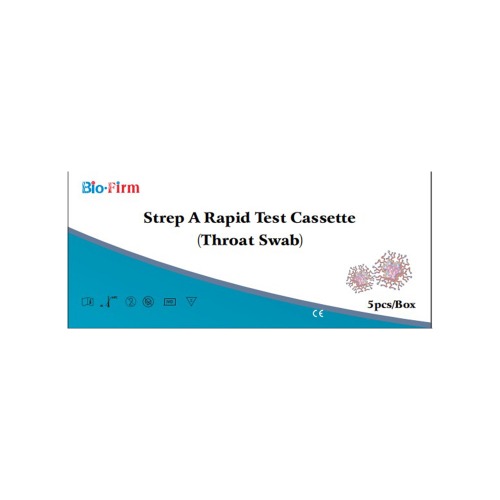Jul 01,2022
When using a Strep A Rapid Test Cassette, it is important to follow proper precautions to ensure accurate results and maintain safety. Here are some precautions to consider:
Read the instructions: Carefully read and understand the instructions provided with the Strep A Rapid Test Cassette before use. Follow the manufacturer's guidelines precisely to perform the test correctly.
Wear appropriate personal protective equipment (PPE): To protect yourself and others, wear gloves, a lab coat, and any other recommended PPE while handling the test cassette and performing the test. This helps prevent the spread of infectious material.
Use within the expiration date: Check the expiration date on the test cassette packaging. Do not use the test if it has expired, as it may yield inaccurate results.
Store properly: Ensure that the test cassettes are stored according to the manufacturer's instructions. Typically, they should be stored in a cool, dry place, protected from direct sunlight and extreme temperatures.
Prepare the sample correctly: Follow the instructions to prepare the sample properly before conducting the test. This may involve using a swab to collect a throat sample from the patient. Follow recommended techniques for sample collection and handling.
Handle the test cassette carefully: The Strep A Rapid Test Cassette is a sensitive diagnostic tool. Handle it with care to avoid any physical damage that may affect its performance or accuracy. Avoid touching the testing area or the membrane where the results will appear.
Perform the test in a clean environment: Ensure that the testing area is clean and free from contaminants that may interfere with the results. Follow appropriate laboratory practices and maintain cleanliness during the testing process.
Interpret the results correctly: Carefully read and interpret the results according to the manufacturer's instructions. Pay attention to the recommended reading time and avoid interpreting the results after the specified time has passed, as this can lead to inaccurate results.
Dispose of used materials properly: After completing the test, dispose of all used materials, including swabs, gloves, and the test cassette, according to the appropriate biohazard waste disposal guidelines. This helps prevent the spread of infectious material.





 Español
Español
 Français
Français
 Deutsch
Deutsch
 عربى
عربى








